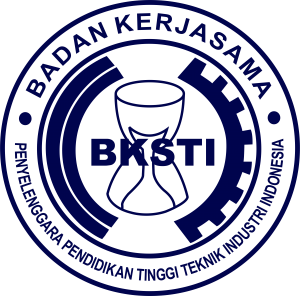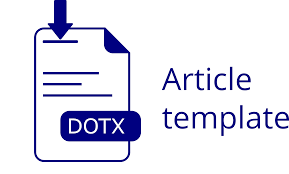Minimasi Waktu Tunggu pada Proses Disassembly Engine dengan Pendekatan Lean Manufacturing di PT OPQ
DOI:
https://doi.org/10.37090/indstrk.v8i4.1669Abstract
Balikpapan is one of the regions in Indonesia that has a remanufacturing business center. PT OPQ is one of the remanufacturing companies with an engine disassembly process that experiences over lead time for 3 years which reaches 2,003 minutes which exceeds the standard for 1,845 minutes due to non-value added activities such as idling, waiting for components, waiting for component files, arranging components, and chatting in the engine disassembly process. This research aims to minimize the time of non-value added activities in the engine disassembly process. This research method uses lean manufacturing with identification stages with process activity mapping, value stream mapping, pareto diagram, and fault tree analysis, as well as providing proposed recommendations. The results showed a decrease in engine disassembly cycle time from 1,874 minutes to 1,615 minutes. Proposed improvements that can be recommended in the form of engine scheduling produce production capacity per month for 1 operator can complete 6 engines, arrange components according to the type of engine components that have been divided for each area, and the application of shortest job first which results in a decrease in lead time between processes which originally reached 1,985 to 1,051 minutes or decreased by 1,900 minutes for the total from before and after improvement. Keywords: Lead Time, Lean Manufacturing, Waste WaitingDownloads
References
Abdul, F. W. (2018). Lean Manufacturing Implementation in Inventory Control As a Repair Process. Jurnal Logistik Indonesia, 2(1), 31–36. https://doi.org/10.31334/jli.v2i1.216
Almahdy, I., Kholil, M., Haekal, J., Firmansyah, A., & Rukmayadi, D. (2021). Implementation of Lean Manufacturing to Reduce Waste in the Maintenance Section in National Automotive Sub Companies of Indonesia. International Journal of Engineering Research and Advanced Technology, 07(09), 05–12. https://doi.org/10.31695/ijerat.2021.3729
Giari Ayunintya Pratiwi, & Nugraha, A. E. (2023). Analisis Waste Pada Proses Produksi Sosis Ayam Dengan Pendekatan Lean Manufacturing Di PT. BI. Industrika : Jurnal Ilmiah Teknik Industri, 7(3), 208–215. https://doi.org/10.37090/indstrk.v7i3.1151
Haviana, E., & Hernadewita, H. (2019). Productivity improvement in the rubber production process using value stream mapping method to eliminate waste. Operations Excellence: Journal of Applied Industrial Engineering, 11(2), 119. https://doi.org/10.22441/oe.v11.2.2019.023
Khoeruddin, R., & Indrasti, D. (2023). Analisis Lean Manufacturing Produksi Saus Gulai dengan Metode Value Stream Mapping. Jurnal Mutu Pangan : Indonesian Journal of Food Quality, 10(1), 15–23. https://doi.org/10.29244/jmpi.2023.10.1.15
Kholil, M., & Arifin, F. (2018). Menurunkan Lead Time Pengecekan Material Tin Case 36 Long Dengan Metode Value Steam Mapping (VSM) Pada PT. F. Sainstech: Jurnal Penelitian Dan Pengkajian Sains Dan Teknologi, 28(1), 7–10. https://doi.org/10.37277/stch.v28i1.263
Komariah, I. (2022). Penerapan Lean Manufacturing Untuk Mengidentifikasi Pemborosan (Waste) Pada Produksi Wajan Menggunakan Value Stream Mapping (Vsm) Pada Perusahaan Primajaya Alumunium Industri Di Ciamis. Jurnal Media Teknologi, 8(2), 109–118. https://doi.org/10.25157/jmt.v8i2.2668
Muchsinin, M. Y., & Sulistiyowati, W. (2023). Quality Control Analysis To Reduce Product Defects With The Lean Six Sigma Method And Fault Tree Analysis. Procedia of Engineering and Life Science, 3. https://doi.org/10.21070/pels.v3i0.1323
Novitasari, R., & Iftadi, I. (2020). Analisis Lean Manufacturing untuk Minimasi Waste pada Proses Door PU. Jurnal INTECH Teknik Industri Universitas Serang Raya, 6(1), 65–74. https://doi.org/10.30656/intech.v6i1.2045
Oktaviana, A. C., & Auliandri, T. A. (2023). Analisis Pengendalian Kualitas Produksi Meja Dan Kursi Menggunakan Diagram Pareto Dan Fishbone Pada PK. SKM JATI. INOBIS: Jurnal Inovasi Bisnis Dan Manajemen Indonesia, 6(4), 559–572. https://doi.org/10.31842/jurnalinobis.v6i4.310
Perdana, S., Tiara, & Rahman, A. (2021). Waste Analysis in the Painting Process of Doll Houses Using Value Stream Mapping (VSM). 512(Icoflex 2019), 0–5. https://doi.org/10.2991/assehr.k.201230.022
Sinurat, A., & Sukanta, S. (2023). Analisis Pengukuran Waktu Baku Untuk Menentukan Tingkat Produktivitas Pada Operator Pemasangan O-Ring Menggunakan Metode Jam Henti (Studi Kasus Di PT Y). Industrika : Jurnal Ilmiah Teknik Industri, 7(3), 233–244. https://doi.org/10.37090/indstrk.v7i3.1003
Suhardi, B., Hermas Putri K.S, M., & Jauhari, W. A. (2020). Implementation of value stream mapping to reduce waste in a textile products industry. Cogent Engineering, 7(1). https://doi.org/10.1080/23311916.2020.1842148
Sunardi, T. A., & Suef, M. (2019). Reducing Production Waste Using Lean Manufacture. Jurnal Teknik ITS, 8(2). https://doi.org/10.12962/j23373539.v8i2.49708
Sutanto, A., & Yuliandra, B. (2019). Remanufacturing of Waste Electrical and Electronic Equipment by the Informal Sector. 9, 8.
Tanoto, Y. Y., Wahjudi, D., & Njo, R. K. (2021). Perancangan Proses Remanufaktur pada Komponen Otomotif. Jurnal Teknik Mesin, 17(1), 11–16. https://doi.org/10.9744/jtm.17.1.11-16
Yasin, M., & Lukmandono. (2021). Implementation of Quality Filter Mapping (QFM) in Hot Press Using Lean Manufacturing To Eliminate Waste. Procedia of Engineering and Life Science, 1(2). https://doi.org/10.21070/pels.v1i2.977
Downloads
Published
Issue
Section
License

This work is licensed under a Creative Commons Attribution-ShareAlike 4.0 International License.









